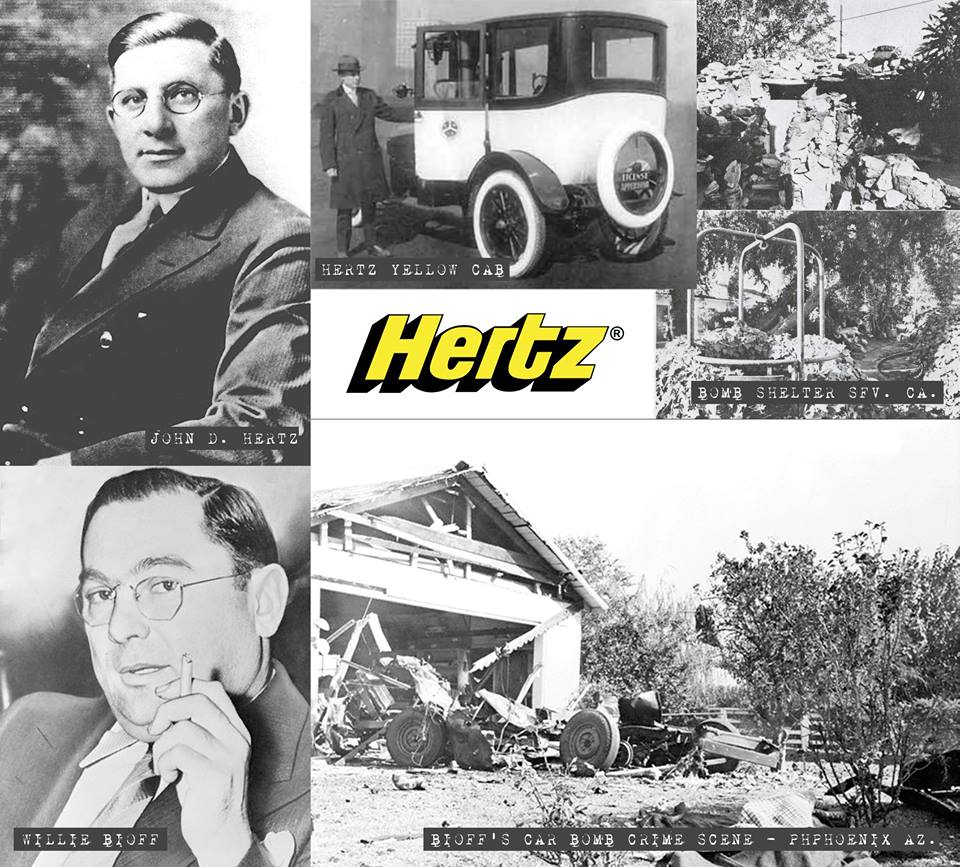The Shoup property (Bioff’s ranch) was purchased by John Hertz, a respected and famous businessman whose fame arose with his taxicab companies and his Hertz Rent-A Car agencies. Hertz took advantage of the horse pastures that Bioff had put in and this west valley site became the scene where some of the nation’s finest racehorses were raised. The pastures were beautified and white fences were put in to surround the acreage. The walls of the property were painted in black and yellow checks as a symbol of Hertz’s taxicab enterprises. He further transformed the home into an elegant palace and even his personal bathroom was decorated in black and yellow checks. Although his fears of intrusion seemed relatively small compared to Bioff’s he suffered from a different kind of paranoia an atom bomb attack.
Hertz spent over $89,000 constructing a bomb shelter at the corner of Shoup and Oxnard Streets just north of the house. It was a masterpiece of engineering that was later written up in a national magazine. The shelter had bath facilities, an elevator, electric kitchen, and sleeping accommodations for fourteen. It even had a n escape hatch where injured persons could be strapped down and pulled through. The shelter had three exits. Outside were four or five cylindrical containers about four feet high which contained radioactive materials. Inside covering an entire wall was a hugh machine with a meter on it. The canisters outside served as a control to measure the level of radiation of the air outside the shelter.
Hertz’ fear of a bombing was further exemplified by a massive hookup to all government agencies which he had inside the house. He had a huge electric system installed in the house which reputedly was connected with every law enforcement agency in the area. It included a complex system of bells and sirens. Above his bed in the main house was a compartment with buzzers, buttons and other controls of the system.
Hertz kept his private plane at what is now the Van Nuys Airport and almost daily during racing season he would fly to Santa Anita Racetrack in Arcadia to see his animals compete. He was a very successful breeder and three Kentucky Derby winners are buried on the Shoup property, which is now the site of the Pinecrest School. The ranch was called the Amarillo Ranch where Hertz believed he would live out the rest of his life in a peaceful setting in the sparsely populated and quiet west San Fernando Valley. His paradise was abruptly interrupted by the post World War II influx of people, congestion, and last but not least one factor not conducive to good horse breeding… smog.
In 1948, several years before Hertz’ death, the Amarillo Ranch was sold to Edna Mae Dye, a teacher who had also purchased other property from actor Robert Cummings with the hope of beginning her own private school.

